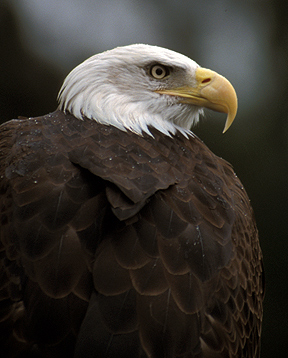High Hill Road, Logan Township, NJ
Phone: (856) 467-3424
Logan Township and Private Owners
From Raccoon Creek Wildlife Management Area, proceed out Berkley Drive and make a Left onto Route 322. After 1.5 miles, merge onto Route 130 West. After 1.2 miles turn Left onto High Hill Road. After 0.5 miles, turn Left into a small gravel parking area with a Green Acres sign. DIRECTIONS FROM NEAREST HIGHWAY: From the intersection of Route 130 and Route 322 near the Commodore Barry Bridge, continue West on Route 130. After 1.2 miles turn Left onto High Hill Road. After 0.5 miles, turn Left into a small gravel parking area with a Green Acres sign. Map
Look for improvements such as viewing platforms closer to Oldman’s Creek along Pedricktown Road in the future.
Dream Park, at Route 130 across from High Hill Road, is a good spot for lowland forest species. Take the gravel road immediately on the Left after entering. Drive slowly and yield to horses.
 |
| Bald Eagle | Marvin Hyett |
| |
| | The marshes surrounding Birch Creek, Raccoon Creek and Oldman’s Creek in Northwestern Gloucester County are well known by New Jersey birders. The mixture of salt marsh, brackish, and freshwater wetlands make this a great area for wading birds, shorebirds, raptors, ducks and other waterfowl year round. Rare birds turn up regularly and other animals such as muskrat, amphibians and many turtles can be found seasonally. High Hill Road, Jefferson Lane, and CR 601/Pedricktown Road cut through the marshes and offer several places to stop and scan or get out for a walk.
Walk Jefferson Lane, a dirt road across the street from the parking area on High Hill Road, for good views of Birch Creek marsh. September or October are good months, when elusive wetland birds such as Common Moorhen, Wood Duck and Bitterns can be spotted, and Bald Eagle, Northern Harrier, Osprey or Peregrine Falcon might pass overhead.
Bald Eagles have been seen fishing over the rivers. Wintering waterfowl include Pintail, Green-winged Teal, Canvasback, Mallard, and Black Duck, Tundra Swan and Canada Goose. Several gulls are present. Other year-round residents include Canada Goose, Northern Cardinal, Carolina Chickadee, Tufted Titmouse and Carolina Wren. Often Red-tailed Hawk or Northern Harrier hunt on the marsh. Winter migrants include Dark-eyed Junco, Winter Wren, and White-throated Sparrow in the surrounding brushy woods.
Wading birds are among the migrants here; including several species of egrets and herons. Shore birds, including several species of sandpipers, Snipe, Greater and Lesser Yellowlegs, and Short-billed Dowitcher pass through. Ruffs have sporadically been seen from High Hill Road and Pedricktown Road. Many ducks, Grebes and even Tundra Swans come in, and Tree, Barn and Rough-winged Swallows are acrobatically arcing over the water to enjoy the abundance of insects. Red-winged blackbirds are displaying their epaulets. Several frogs, including the southern leopard, green, bullfrog and spring peepers add to the soundtrack of breeding birds.
The abundance of vegetation makes viewing the inhabitants of the water a little more challenging. Forsters Tern, gulls, several herons and often eagles fish for the aquatic life, while red bellied and painted turtles sun themselves. Dragonflies and damselflies are active over the marsh. Nesting passerines include water-lovers such as Swamp Sparrow, Belted Kingfisher, Waterthrushes and Marsh Wren, and more wide-spread breeders like Yellow Warbler, Mockingbird and Goldfinch, Carolina Wren, and Eastern Kingbird. Southern pond lily and swamp rose mallow are blooming.
The falling leaves enable better viewing into the marshes. Great Blue and Green Heron, Snowy, Cattle and Great Egrets are often seen, along with some Least Bitterns. Scan the waters for Coot, Pied-billed Grebe and Wood Duck. Snow Geese fly overhead, and shorebirds such as Least, Spotted and Pectoral Sandpipers, Red Knots, Yellowlegs, and Dunlin are passing through. Seeding cattails and wild rice attract several migrating warblers and sparrows. Some of the earliest winter migrants are moving in at this time.
|